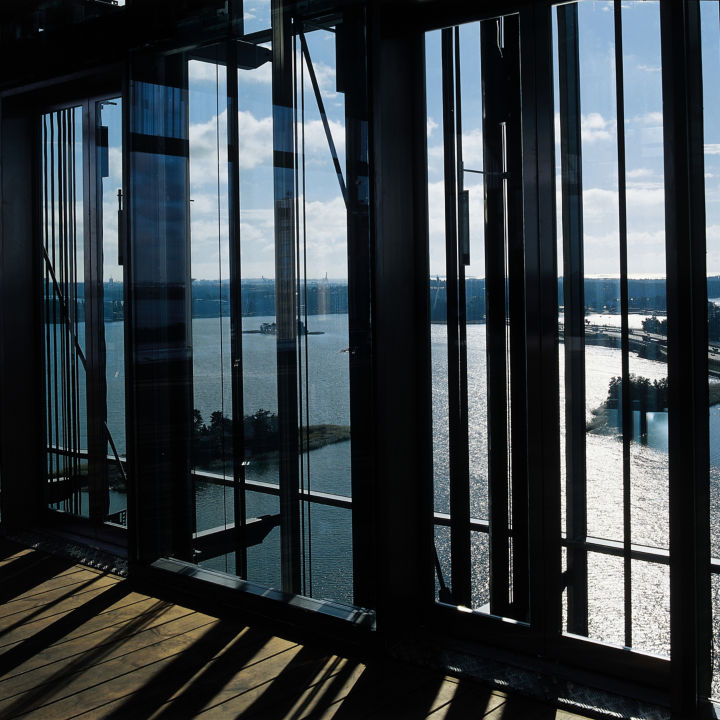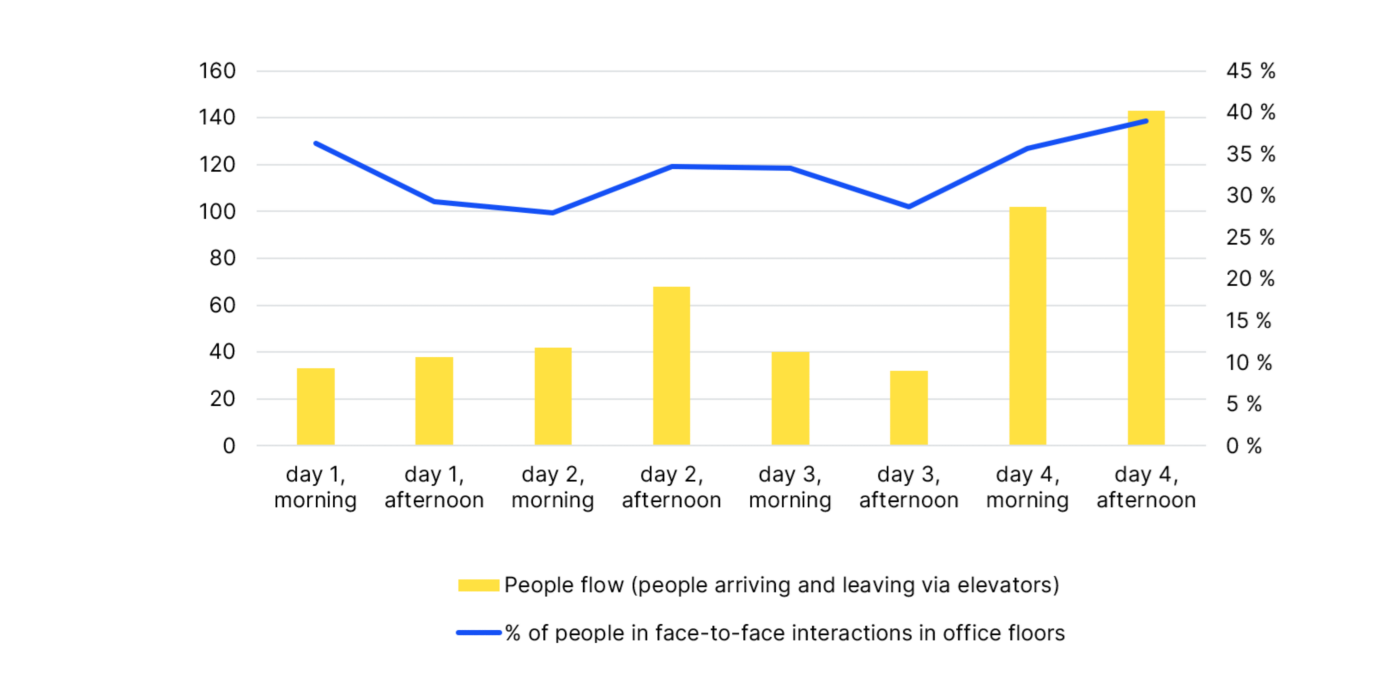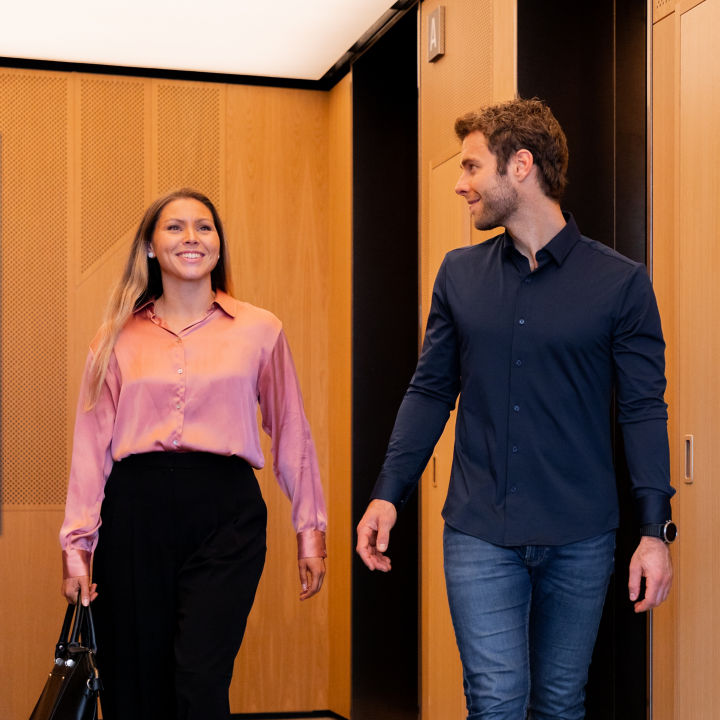
Finland has earned the title of the happiest country on earth for the past eighth years. According to the World Happiness Report, Finns are happier than others, thanks to factors including lower income inequality, high social support, freedom to make decisions, and low levels of corruption. But does riding Finnish elevators correlate somehow with Finns being a happy bunch?
The study conducted in 2024 by Finnish elevator company KONE, in collaboration with our ecosystem partner Workspace Ltd., merged KONE’s People Flow data of elevator use at the office with observations of face-to-face interactions and visible indicators of happiness, such as smiles.
Project lead Juha-Matti Kuusinen, head of digital innovation at KONE, was not surprised to find that smooth People Flow in an office building of a multinational company has a positive impact on atmosphere and collaboration.
“The study shows that elevators can play an important role in increasing face-to-face interaction, which in turn makes people happier, contributing to their well-being at work,” he recounts.
Under the microscope: discussions, facial expressions and usage data
This joint study was done by using two different data-gathering methods: human interaction observations by Workspace Ltd. and elevator usage data gathered as part of the KONE People Flow analytics. “Over the course of four office days from Tuesday to Friday, we made more than 1,500 observations of people across eleven floors and four elevators at the KONE Building, noting various work modes, situations, and moods,” says Pasi Kaitila, business director at Workspace Ltd.
These observations likely included repeated sightings of the same individuals. Two key cultural metrics were in focus: how many of the observed people were a) having discussions face-to-face or b) seemingly joyful or laughing. The elevator data revealed how many people had entered and exited the observed floors via elevators at the same time intervals while the study was ongoing.

Higher usage of elevators correlates with happiness
According to the results, employees from various floors tend to use the elevators at similar times in the afternoon, in turn increasing the percentage of people thrown into face-to-face interactions. These post-lunch elevator rides are likely driven by a coffee craving. After all, it is a known fact that Finland has one of the highest coffee consumption rates in the world.
“When more people use elevators, they are more likely to engage in face-to-face interaction with each other, often leading to laughter and joy,” Kaitila sums up.
People flow at the KONE building is quite smooth, so the study did not cover cases with long wait times, congestion in the lobby or in the elevators. It's also worth noting that in an office setting, coworkers often know each other, so striking up a friendly conversation is easier and more likely than with a complete stranger.

Positive interactions are linked to business success

According to other research, office atmosphere and the number of daily interactions are two key factors influencing business performance.
In recent years, the frequency of in-person interactions at offices has diminished due to the increase of remote work. Many companies are worried about this trend, as it could negatively impact employees' well-being and creativity. Personal connections and strong relationships play a crucial role in fostering innovation and productivity.
“Enabling valuable interactions with excellent people flow and work environment design is becoming more and more important as companies welcome their employees back to the offices," Kaitila adds.
This lighthearted study conducted by KONE and Workspace showed that Finns can be quite the chatterboxes when in an elevator – debunking the persistent myth of the residents of this Nordic nation being quiet and withdrawn. Next time you find yourself in an elevator, why not break the silence with a friendly "hello" or a classic witty comment about the weather? You might just find that a little conversation can go a long way in brightening your day!
The study was part of the Untangling People Flow consortium that KONE participated in the joint KONE Veturi program called The Flow of Urban Life, co-funded by Business Finland.
